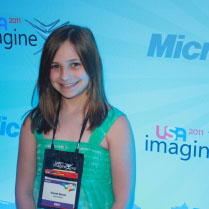
The Imagine Cup competition is aimed at college-level students, and some 400 of them are here in New York City this week for the 2011 Finals, showcasing the technology they have designed and built. These are undoubtedly some of the brightest young technologists in the world -- there are teams here from 70 countries -- and they all have varied backgrounds that have led them to become engineers.
For many students, college is the first opportunity they have to take computer science courses, so it can be intimidating for novice programmers to walk into classes where a good chunk of their fellow students may already have a lot of skills and knowledge. It's a bit like walking into an Introductory Spanish class and finding that, in fact, half the class has spent the last 10 years living in Mexico.
One solution is to start students programming earlier -- before college, and as I've written about before, there are numerous ways that computer science can be introduced to kids who are quite young. One of those tools is Microsoft's Kodu.
Kodu is a visual programming language made especially for creating games. Kodu's language is entirely icon-based, fairly easy to learn, and aimed at kids 9 to 17. It works on PCs and on the Xbox.
Microsoft recently held its Kodu Cup, a competition for budding young programmers and game-makers in the U.S. One of the prizes for the winners was to get to come here to New York for the Imagine Cup Finals.

